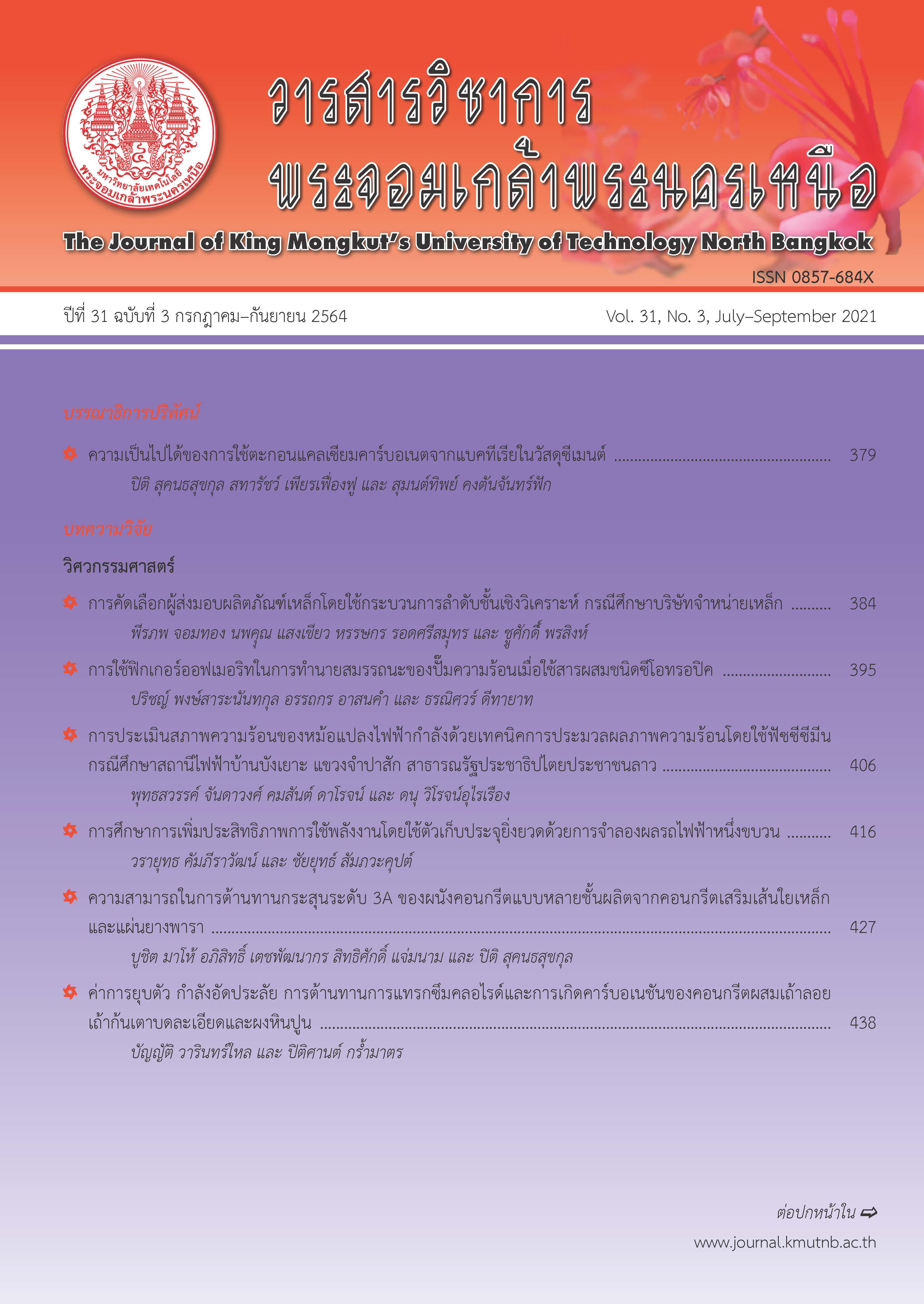Class 3A Bullet Resistance of Multilayer Bulletproof Panels Made of Fibre Reinforced Concrete and Rubber Sheet
Main Article Content
Abstract
In this research, the impact resistance of multilayer bulletproof concrete panels made of steel Fibre-Reinforced Concrete (FRC) and para-rubber sheets (R) subjected to class 3A bullet (.44 Magnum Semi Jacketed Hollow Point) in accordance with the National Institute of Justice (NIJ) Standard were investigated. The experimental procedure was divided into 2 parts. Part I involved the impact energy absorption test of Para-rubber sheet, Styrofoam sheet and FRC with different thicknesses, and FRC with different types of fibre and volume fractions. Part II, the information obtained from the first part was used in the designing and construction of multilayer bulletproof panels. To check the design validity, the multilayer panels were designed to have different degrees of impact energy absorption by using different configurations, such as material types or thicknesses. The result shows that the energy absorption of each material depends on thickness, fibre volume fraction and fibre types. For multilayer panels, 3-failure modes were observed: 1) Perforation, 2) Penetration with back spalling, and 3) Penetration without back spalling or without damage. In addition, the 3rd failure mode occurred when the energy absorption of multilayer panel was equal to 3172 Joule.
Article Details
The articles published are the opinion of the author only. The author is responsible for any legal consequences. That may arise from that article.
References
[2] P. Sukontasukkul, S. Mindess, and N. Banthia, “Penetration resistance of hybrid fibre reinforced concrete under low velocity impact loading,” presented at Annual Conference of the Canadian Society for Civil Engineering, Montreal, Quebec, Canada, 2002.
[3] M. Nili, A.H. Ghorbankhani, A. AlaviNia, and M. Zolfaghari, “Assessing the impact strength of steel fibre-reinforced concrete under quasi-static and high velocity dynamic impacts,” Construction and Building Materials, vol. 107, pp. 264–271, 2016.
[4] R. Sovjak, T. Vavriník, J. Zatloukal, P. Maca, T. Micunek, and M. Frydrýn, “Resistance of slim UHPFRC targets to projectile impact using in-service bullets,” International Journal of Impact Engineering, vol. 76, pp. 166–177, 2015.
[5] S. Kravanja, R. Sovják, P. Konrád, and J. Zatloukal, “Penetration resistance of semi-infinite UHPFRC targets with various fiber volume fractions against projectile impact,” Procedia Engineering, vol. 193, pp. 112–119, 2017.
[6] A. T. Noaman, B. H. Abu Bakar, and H. M. Akil., “The effect of combination between crumb rubber and steel fiber on impact energy of concrete beams,” Procedia Engineering, vol. 125, pp. 825–831, 2015.
[7] P. Sukontasukkul, S. Jamnam, K. Rodsin, and N. Banthia, “Use of rubberized concrete as a cushion layer in bulletproof fiber reinforced concrete panels,” Construction and Building Materials, vol. 41, pp. 801–811, 2013.
[8] S. Jamnam, B. Maho, P. Sukontasukkul, K. Fujikake, and N. Banthia “Energy absorption and failure pattern of multilayer bulletproof concrete panel made of steel fiber, styrofoam and para-rubber,” The Journal of KMUTNB, vol. 28, no. 3, pp. 515–524, 2018 (in Thai).
[9] Ballistic Resistance of Body Armor, NIJ standard-0101.06, 2006.
[10] B. Maho, P. Sukontasukkul, S. Jamnam, E. Yamaguchi, K. Fujikake, and N. Banthia, “Effect of rubber insertion on impact behavior of multilayer steel fiber reinforced concrete bulletproof panel,” Construction and Building Materials, vol. 216, pp. 476–484, 2019.

